Measuring the volume of the buttocks or hips for men and women must be done in compliance with certain rules. The procedure is often carried out in a studio. A person who knows his girth and semi-girth usually does not have problems with choosing clothes.
For sewing what clothes you will need to measure your hips
There are several ways to measure the hips. Taking measurements is necessary if a person plans to sew clothes themselves or to order in a studio. In the process, take into account the protrusion of the abdomen and focus on the protruding points of the buttocks. In order not to make a mistake in the calculations, it is necessary to correctly position the tailor's tape.

Measuring hip circumference is necessary for sewing various waist garments:
- coats (balmakaans, peacoats, dusters, invernesses, capes, covercoats, copars, crombies, down jackets, raglans);
- raincoats (macintoshes, hubertusses, raincoats, trench coats, capes);
- trousers (cargo, flared, culottes, leggings, palazzo, tights, skinny, slacks, jeans, capri, joggers);
- skirts (straight, bias, wrap-around, tapered, conical).
Measuring hip circumference may be necessary when sewing jackets, cardigans and other outerwear.
How to measure hip volume
To measure the volume of the hips, a tailor's tape measure (sewing centimeter) is most often used - a flexible rubberized tape with markings. If you don't have a device at hand, you can use various improvised means. Experts recommend choosing any flexible material (a strip of fabric, woolen thread, wire).
How to measure your hips correctly
Nowadays, people make most purchases in online stores. In order not to make a mistake with the size, you need to know at least the waist and hips. It is most convenient to take measurements with a special tape. You can ask family members for help. Taking measurements together will be easier.
To a woman
You can measure your hips using a tailor's tape. If you are planning to sew trousers, you will also need to find out their height.
Algorithm for taking measurements:
- go to the mirror, stand in front of it at full height;
- turn to face the mirror, put your legs together, straighten your shoulders;
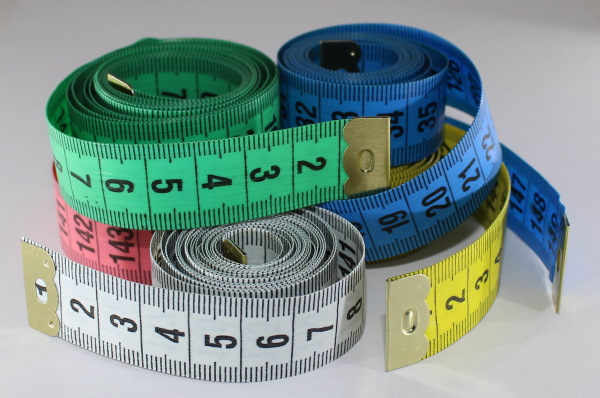
- pick up a tailor's tape measure;
- wrap it around your hips correctly;
- record the result.
It is essential to take your measurements in front of a mirror. The reflection will help you evaluate your own body parameters. You can also see how the tape measure "lies" in front of the mirror. If it is crooked, the result may not be accurate.
You should take your measurements after all your outerwear has been removed. The accuracy of the result will not be affected by the presence of underwear. It is not necessary to get rid of it.
There is no need to place your feet shoulder-width apart. It is recommended to place them as close to each other as possible. Widely spaced legs can increase volume. It is also necessary to understand the difference between the hips and the waist. The natural waist is the most sunken and narrow part of the body. The hips are located below this "notch".
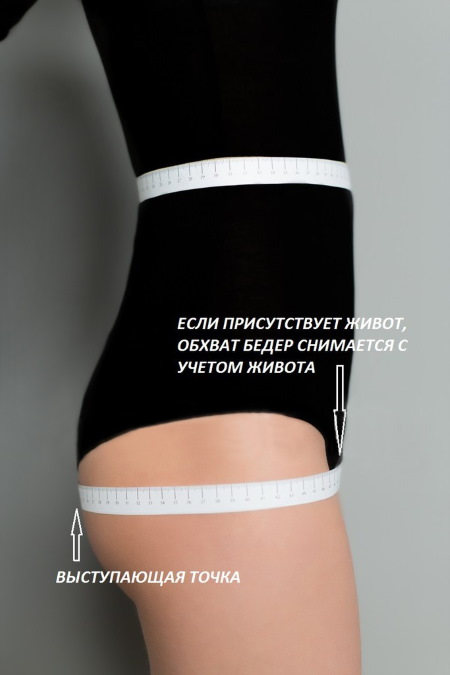
When measuring volume, the buttocks are also taken into account. To take a measurement, you need to find the widest point. This will allow you to get the most reliable data. The tailor's tape measure should be moved a few centimeters down from the waist.
The measuring instrument should be applied to the central axis of the body, wrapped around the torso. The tape measure should also cover the buttocks. Experts recommend looking in the mirror once more to make sure the tape is not twisted. The measuring instrument should fit the body as tightly as possible. The skin should not be pulled too tightly.
The tape is considered to be applied correctly if a finger can easily fit between it and the thigh. To find out your hip size, you need to look at the number located at the junction of the metal tip and the rest of the tape.
Experienced tailors usually add 2-3 cm to the obtained values when sewing clothes. This will ensure that the item fits more freely to the body.
To a man
You can measure the volume of men's hips using auxiliary tables. They indicate approximate values according to height. The male figure differs from the female one - their hips are narrower than their shoulders. The algorithm for taking measurements is standard.
Necessary:
- go to the mirror (preferably full-length), take a tape measure in your hands, find the widest part of your hips;
- wrap a measuring tape around it;
- record the obtained data.
You can take measurements yourself, without the help of others. It is important to constantly ensure that the tape does not twist. It is recommended to bring your legs together. You need to get rid of any outerwear (trousers, shorts). It is not necessary to remove underwear.
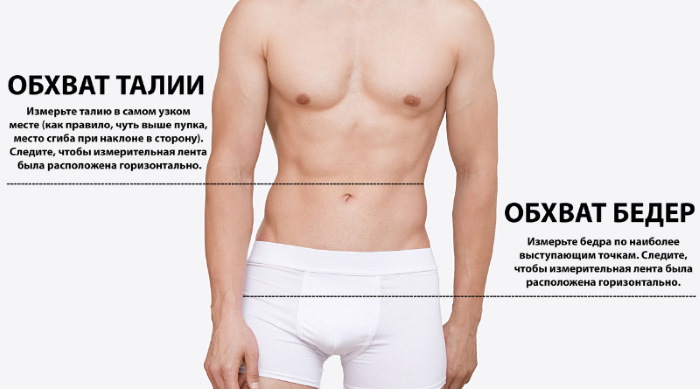
The tape measure should not pull the skin too tightly. The index finger should be able to pass freely between the tape and the thigh. When taking measurements, there is no need to strain the muscles. The person should be completely relaxed.
For the child
It is quite difficult to take measurements from small children, so experts recommend using special tables that indicate the child's sizes by age.
Typology:
- newborn group;
- nursery group;
- preschool group;
- junior school group;
- middle school group;
- senior school group;
- teenage group.
For infants, the size is determined by weight and height. When working with tables, it is also necessary to take into account an additional feature - the presence of fullness. Taking measurements from children over 3 years old is carried out using a tape.
If the child is small, it is necessary to adhere to a number of rules:
- It is better to take measurements from children under 2 years old together (one person measures the hips, the second holds the child still);
- It is not necessary to bring the child to a mirror (usually, hip circumference measurements for children under 3 years of age are taken lying down).
Taking measurements from school-age children and teenagers is quite simple:
- you need to ask the child to stand up straight, put his heels together and lower his arms;
- find the wide part of the thigh and wrap it with tailor's tape;
- record the obtained data.

An error of no more than 2-3 mm is allowed. It is necessary to ensure that the tailor's tape does not twist or squeeze the skin.
How to take measurements without a tape measure
You can simply measure your hip circumference using threads. To do this, you will need a ruler. Wrap the thread around your hips and cut off the excess. To find out the length of the thread, just place it on the ruler.
The items chosen as measuring devices should not be of any value, because they will need to be shortened or marked in the process. Most likely, after the procedure, the improvised tape measure will have to be thrown away. If you don’t have a ruler at hand, you can pay attention to items with straight edges.
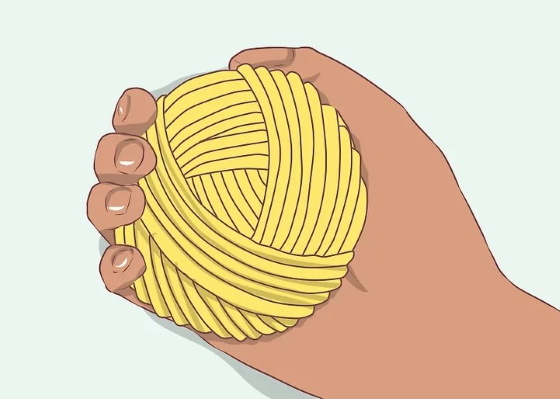

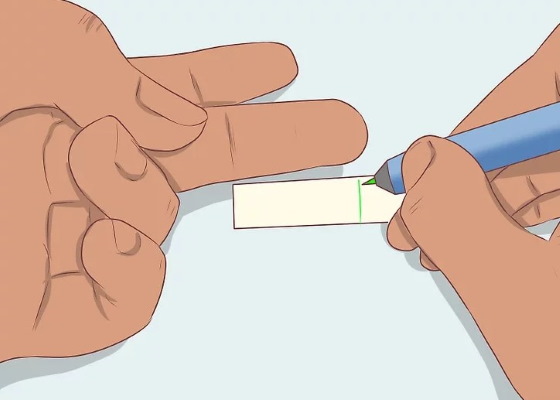
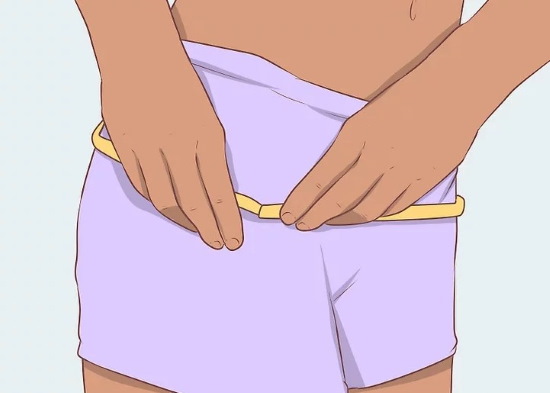
For example, an A4 sheet of paper is 29.7 cm long and about 21 cm wide. Banknotes of 500 and 100 rubles are standard in size - 15 cm long and 6.5 cm wide. A scale should be applied to the material chosen as a measuring tool. Experts recommend marking every centimeter - this will allow you to take measurements as accurately as possible.
Basic rules to follow when measuring your hips
You can measure your hips as accurately as possible if you take the right position. The measurements may be "floating" if you use a measuring tape with incorrectly applied divisions during the process.
Experts also recommend paying attention to the time of day. It is preferable to take measurements in the morning or afternoon. At sunset, natural light will be dim, measurements are usually not taken in the evening. To see all the features of the figure, it is necessary to place several additional light sources in the room.
For these purposes, use lamps that emit soft light. They are installed at a small distance from the mirror. Experts recommend taking off clothes and preparing the necessary measuring accessories before trying on.
So that clothes don't get in the way
Measuring hips, waist or other body parts must be done correctly. Experts recommend taking off all clothes before trying them on. If you wrap the tape around the fabric (pants, skirts, tunics), the readings may be distorted.
It is not necessary to take off your underwear. Women can remain in a thin slip, provided that the fitting takes place in a studio or other public places. Shirts are usually made of chiffon, crepe de chine or silk. In this case, 1-2 cm must be subtracted from the obtained figures.
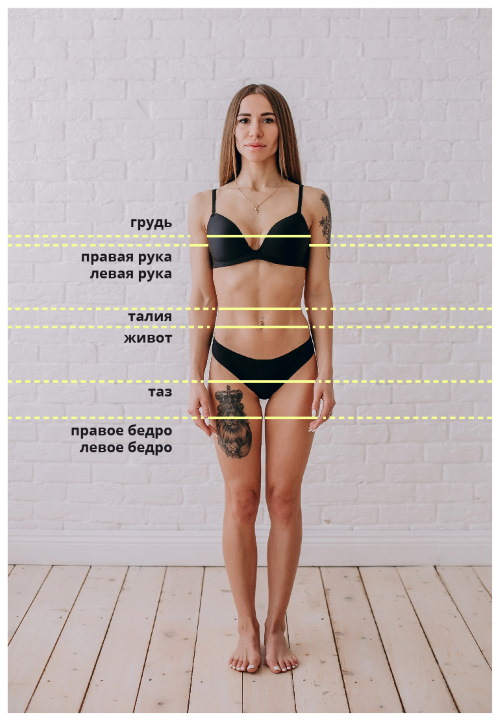
You can purchase a shapewear shirt especially for such cases. These combinations are made of thin, elastic material. The shirt fits tightly to the body, and there are usually chiffon or lace inserts in the hip area.
During the fitting, a man may remain in thin underwear. Trousers, long johns, shorts and other clothing must be removed. Particularly shy men can wear thin leggings or tights. In this case, 1-1.5 cm must be subtracted from the values obtained.
Use a mirror
To assess the advantages of the figure and identify possible disadvantages, hip measurements for men and women are taken in front of a mirror. It is desirable that the object in which people see their reflection be placed in a living space. Mirrors that visually make you look slimmer are usually installed in fitting rooms, studios, and shopping centers.
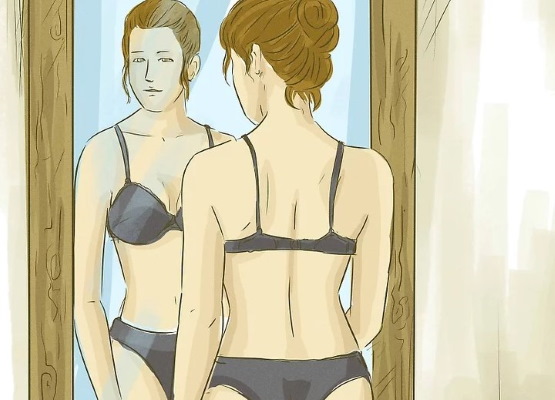
You need to take measurements in front of a mirror to get the most accurate result. If the tape wrapped around the hips is twisted, the values may increase by several centimeters.
Standing in front of the mirror, first of all, you need to determine the maximum high point. It is quite easy to do. To be sure, you need to take measurements several times. This will allow you to get accurate readings. Also, the final result depends on the position of the body.
Correct body position
The volume of the buttocks and hips must be measured while standing. Experts recommend taking measurements in a light, spacious room. It is advisable to choose a full-length mirror. You can place several lamps near it that emit soft light (especially if measurements are taken in the evening).
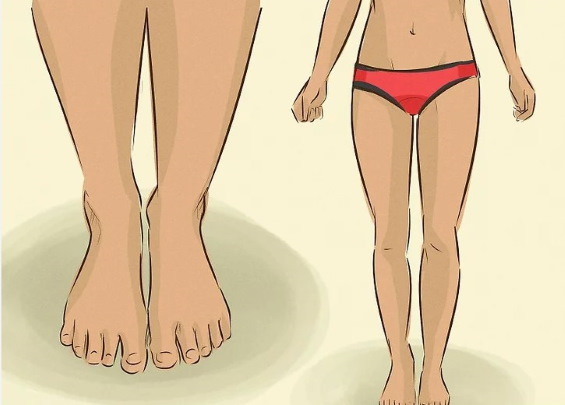
Before taking measurements, you need to take off all your outerwear, remaining in your underwear. You need to stand straight in front of the mirror, putting your heels together. It is not recommended to place your feet shoulder-width apart. The volume of your hips will increase in direct proportion to the distance from your right leg to your left. During the measurement, you need to try to keep your back straight.
How to Easily Determine the Widest Part of Your Hips
When sewing outerwear or waist products (shorts, trousers, leggings, jeans, skirts), several anthropometric points are found on the human body. This is necessary so that the item fits the figure perfectly.
It is necessary to determine:
- Buttock point. The tape measure is wrapped around the protruding part of the buttocks (approximately in the middle).
- Pelvic point. The tailor's tape is lowered by how many centimeters below the waist (approximately under the femur).
- Hip point. The tailor's tape measure should be lowered 4-5 cm below the pelvic point.
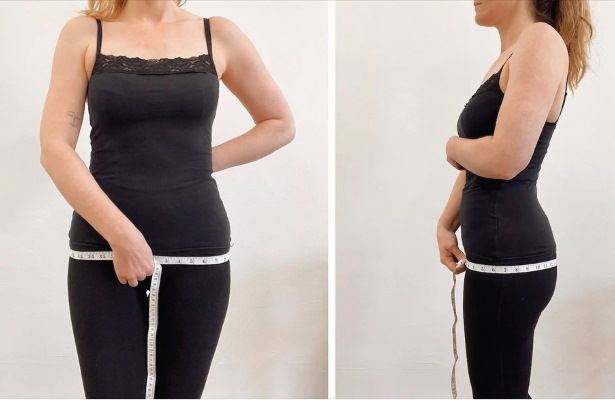
Experts recommend recording all received readings. For accuracy, you can measure the same part of the body several times. In addition to the hip circumference, for sewing outerwear you also need to measure the height, second circumference and half-girth.
To find out a person's OB, you need to wrap a tape measure around the protruding part of the buttocks. The height of the hips is measured from the side: the tape measure is placed on the waist and lowered to the hip.
To measure the second circumference, you need to find the so-called "breeches" (there are fatty deposits on the outer side of the thigh). It is around them that you need to wrap the tape measure.
Determining clothing size by hip circumference
To determine the exact size of clothing, it is necessary to measure the horizontal circumference of the required part of the body correctly. The results can be rounded off in accordance with the typical characteristics of clothing. It is not recommended to rely on labels, even if the item fits well.
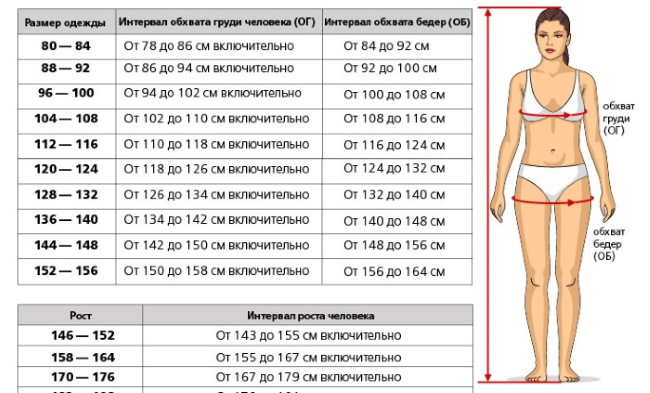
When rounding down the parameters, you need to remember that the finished garment will fit tightly to the silhouette. If the values were rounded up, the item will "sit" loosely. The sizes of men's and women's clothing (according to hip size) are indicated in the table.
Women's sizes
According to anthropometric standards, the female figure is divided into several types. Their size characteristics vary.
Main features:
- hip circumference (half-girth is not taken into account);
- chest circumference (third option, Og3);
- height.
Women's figures are divided into several fullness groups. They can be determined by simple mathematical operations: from the OB indicators, it is necessary to subtract the Og3 values.

The following standards were adopted in the CIS:
- First group. The difference between the hips and chest volume is 1-2 cm.
- Second group. The difference between the hips and chest volume is 5-6 cm.
- The third group: the difference between the hip and chest volume is 9-10 cm.
- Fourth group. The difference between the hips and chest is 13-14 cm.
- Fifth group. The difference between the hips and chest is 18 cm.
Group 6 (zero fullness). The difference between the hips and chest is 2 cm.
Table of sizes of women's skirts, trousers, shorts according to hip size (other indicators are also indicated):
| Sizes in CIS countries | Int (international format) | Hip volume | Waist size | Bust volume |
| 70 | 5XL | 141-144 cm | 137-140 cm | 140-143 cm |
| 68 | 5XL | 137-140 cm | 131-134 cm | 136-139 cm |
| 66 | 5XL | 134-136 cm | 127-130 cm | 132-135 cm |
| 64 | 4XL | 131-134 cm | 124-126 cm | 128-131 cm |
| 62 | 4XL | 128-131 cm | 118-121 cm | 124-127 cm |
| 60 | 4XL | 125-128 cm | 112-115 cm | 120-123 cm |
| 58 | XXXL | 122-125 cm | 108-111cm | 116-119 cm |
| 56 | XXL | 119-122 cm | 104-107 cm | 112-115 cm |
| 54 | XXL | 116-119 cm | 100-103 cm | 108-111 cm |
| 52 | XL | 113-116 cm | 94-97 cm | 103-107 cm |
| 50 | L | 110-113 cm | 92-94 cm | 99-102 cm |
| 48 | L | 107-110 cm | 90-93 cm | 95-98 cm |
| 46 | M | 104-107 cm | 84-87 cm | 91-94 cm |
| 44 | M | 101-104 cm | 80-83 cm | 87-90 cm |
| 42 | S | 98-101 cm | 64-67 cm | 83-86 cm |
| 40 | XS | 95-98 cm | 60-63 cm | 79-82 cm |
| 38 | XXS | 92-95 cm | 56-59 cm | 75-78 cm |
Waist, hip and chest measurements may vary depending on the individual characteristics of a woman's figure.
Men's sizes
Male figures are also classified by type of fullness.
To determine it, you need to subtract the waist size from the chest size:
- First group. The difference between the chest and waist size is 21-22 cm.
- Second group. The difference between the chest and waist size is 15-16 cm.
- Third group. The difference between the chest and waist size is 9-10 cm.
- The fourth group. The difference between the chest and waist size is 3-4 cm.
- Fifth group. The difference between the chest and waist size is 1-2 cm.
The groups are arranged in descending order. Negative values are achieved due to the characteristic excess of the OT to Og3 indicator.
Size chart for men's shorts and trousers:
| Size (standard designation) | Hip volume | Waist size |
| 68 | 134-137 cm | 122-125 cm |
| 66 | 131-134 cm | 119-122 cm |
| 64 | 128-131 cm | 116-119 cm |
| 62 | 125-128 cm | 113-116 cm |
| 60 | 122-125 cm | 110-113 cm |
| 58 | 118-122 cm | 107-110 cm |
| 56 | 115-118 cm | 104-107 cm |
| 54 | 112-115 cm | 101-104 cm |
| 52 | 109-112 cm | 108-101 cm |
| 50 | 106-109 cm | 105-108 cm |
| 48 | 103-106 cm | 102-105 cm |
| 46 | 100-103 cm | 99-102 cm |
| 44 | 97-100 cm | 96-99 cm |
It should be remembered that the main indicator when choosing shirts, sweaters and shirts is the chest circumference.
Children's sizes
When choosing children's clothing, it is necessary to take into account the child's height and weight. Newborns are usually bought clothes 1-2 sizes larger.
Dimensional characteristics:
| Age of the child | Weight | Height | Hip volume | Waist size | Bust volume | Size |
| 12 years old | 34-37 kg | 150-153 cm | 80-81 cm | 80-81 cm | 80-81 cm | 38 |
| 11 years old | 32-35 kg | 144-147 cm | 74-79 cm | 74-79 cm | 74-79 cm | 36 |
| 10 years | 30-33 kg | 140-142 cm | 70-74 cm | 70-74 cm | 70-74 cm | 34 |
| 9 years | 28-31 kg | 132-135 cm | 68-73 cm | 68-73 cm | 68-73 cm | 32 |
| 8 years | 26-29 kg | 126-129 cm | 65-69 cm | 65-69 cm | 65-69 cm | 32 |
| 7 years | 24-27 kg | 120-123 cm | 62-65 cm | 62-65 cm | 62-65 cm | 30 |
| 6 years | 22-25 kg | 114-118 cm | 56-60 cm | 56-60 cm | 56-60 cm | 30 |
| 5 years | 20-23 kg | 110-112 cm | 54-58 cm | 54-58 cm | 54-58 cm | 28 |
| 4 years | 17-19 kg | 107-110 cm | 52-55 cm | 52-55 cm | 52-55 cm | 28 |
| 3 years | 15-17 kg | 105-108 cm | 50-53 cm | 50-53 cm | 50-53 cm | 26 |
| 2 years | 13-15 kg | 97-100 cm | 49-51 cm | 49-51 cm | 49-51 cm | 26 |
| 1 year 6 months | 10-12 kg | 85-89 cm | 46-48 cm | 46-48 cm | 46-48 cm | 24 |
| 1 year | 8-10 kg | 79-83 cm | 43-45 cm | 43-45 cm | 43-45 cm | 24 |
| 6-9 months | 6-8 kg | 72-75 cm | 40-42 cm | 40-42 cm | 40-42 cm | 22 |
| 3-6 months | 5-7 kg | 69-71 cm | 38-40 cm | 38-40 cm | 38-40 cm | 22 |
| 90 days | 4.5-6 kg | 62-65 cm | 36-39 cm | 36-39 cm | 36-39 cm | 20 |
| 60 days | 4-5 kg | 53-56 cm | 35-37 cm | 35-37 cm | 35-37 cm | 18 |
| 30 days | 3.5-4.5 kg | 50-53 cm | 33-35 cm | 33-35 cm | 33-35 cm | 18 |
When choosing children's clothing, special attention must be paid to the quality of the material. Synthetic fabric may cause an allergic reaction.
What is half hip circumference (Sat) and why is the measurement needed
Half hip circumference (SH) is considered the most controversial value. According to reviews, there are several ways to measure it. Some professional fashion designers suggest simply dividing the hip circumference by 2.
Half-hip circumference is measured when sewing waist-type garments (trousers, skirts, shorts, leggings). The indicators can also be useful when choosing outerwear (fitted cardigans, jackets, short coats).
How to calculate Sat
If a person does not have excess weight, then it is enough to simply wrap a tailor's tape around the thigh from behind so that it closes on the right side in front. The method is suitable for people with a flat stomach.
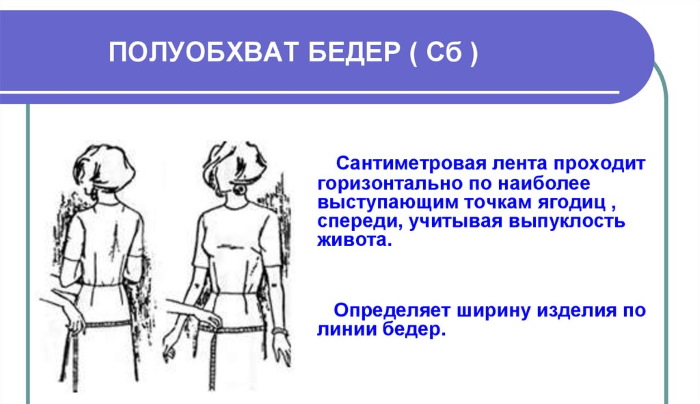
If you have excess weight, you can measure the half-girth of your hips as follows:
- wrap a string or thick thread around your hips;
- make marks on the right and left sides, exactly in the center;
- cut off the excess (the ends of the string);
- measure the length of the remaining part of the lace.
First you need to find the highest part of the buttocks. Usually, the tailor's tape measure is wrapped around the convex part of the hips (the tape is placed a few centimeters below the waist). Also, when sewing clothes, the hip length may be needed.
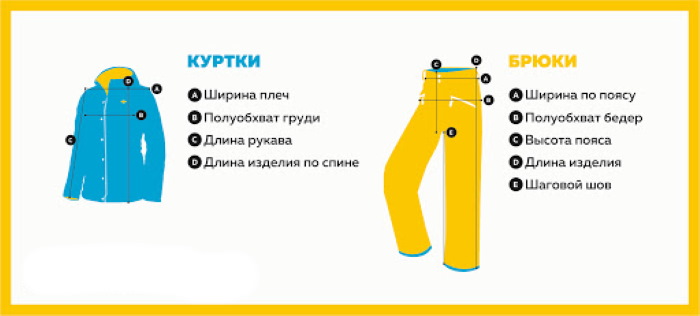
Many people mistakenly wrap the tailor's tape around one hip. It is necessary to visually divide the side of the hip into 2 parts and mentally mark the central point. Attach the metal end (the beginning of the sewing centimeter) to one point and pull the tailor's tape to the other point. Write down the data.
It is necessary to measure the volume and half-girth of the hips correctly so that the custom-made clothes "fit" perfectly. To obtain accurate readings, take measurements in front of a mirror. It is advisable to remove all outerwear, remaining in a thin shirt or underwear. It is not recommended to eat before measuring.
Video about measurements
How to measure your hips:
